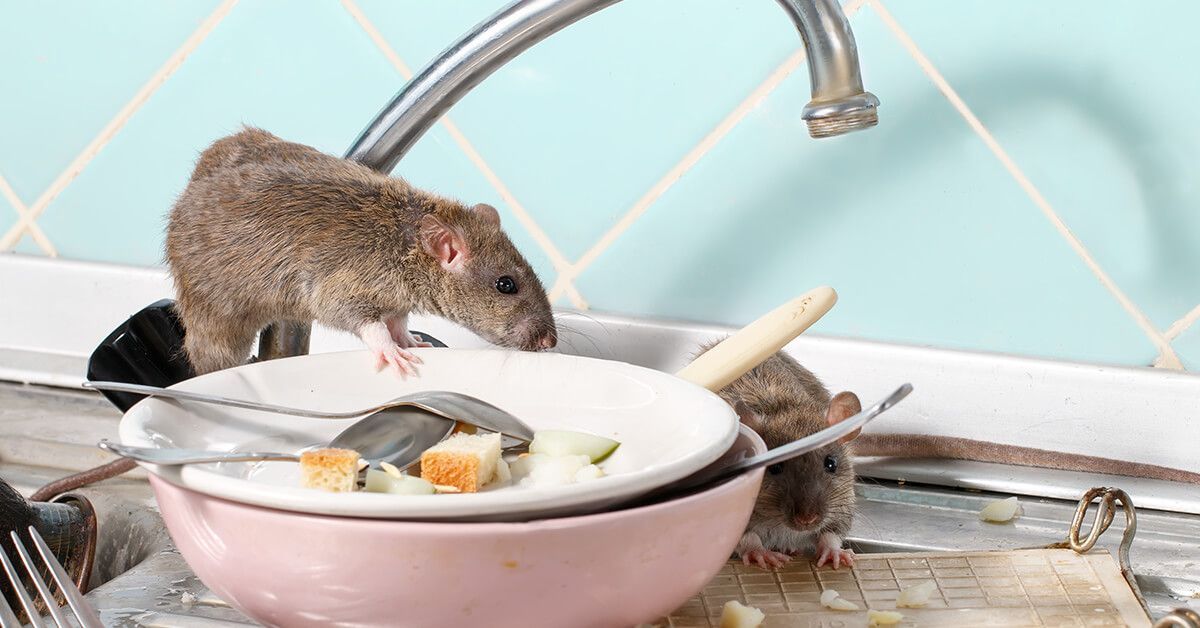Imagine waking up from a restful night of sleep only to discover bites all over your skin—it’s not how anyone wants to start their day. Bites can be a concerning indication that you could have a bug infestation, and many people instantly fear that bedbugs could be to blame.
But what happens when there are no signs of bedbugs? Could there be another insect at play?
The truth of the matter is that bedbug bites are frequently misdiagnosed. It’s common for people to confuse bedbug bites with other insect bites, skin rashes, and even hives—which makes it tricky to figure out what’s causing the problem.
If you notice bedbug bites on your skin but don’t see any signs of the tiny culprits, it’s important to know alternative insect bites and skin conditions that could be the cause.
Bedbugs (Cimex lectularius) are small, parasitic insects with a reputation for feeding on the blood of sleeping humans (and sometimes animals). Unfortunately, it can be difficult to pinpoint whether or not bedbugs are responsible for your bites if you don’t see any sign of them.
Here are some common signs of bedbug activity in your home. Remember, you don’t need to be sure of a bedbug infestation to call the experts at Local Exterminator. We’re here to help even when you don’t know which creepy-crawly is making you its midnight snack.
MOLTED EXOSKELETONS
Bedbugs are known to shed their skin between each meal. They use the nutrients from their blood meal to help them grow, which causes their skin to shed. While a single bedbug’s exoskeleton might not draw attention, if you start to notice a bunch of unusual-looking shells or remnants in your bed, it’s time to look into bedbug eradication options.
A SWEET ODOR
If you begin to notice a sweet odor that wasn’t there previously, note that bedbugs are known to communicate with one another through pheromones. These special chemicals can give off a sweet smell when emitted.
LIVE BEDBUGS
Adult bedbugs are visible to the naked eye as they grow to be about ¼ inches long. They take on a reddish-brown color and look swollen after feeding, making them easier to detect. On the other hand, nymphs are harder to see due to their small size and pale coloring. Pay close attention to the folds of your sheets and the seams of your mattress since these are popular places for bedbugs to hide.
RUST-COLORED SPOTS ON BED LINENS
These little blood-eating pests excrete blood-filled fecal matter on mattresses, linens, and nearby furniture. This is a telltale sign you’ve had some unwanted nighttime visitors. It could also be a sign that they were squashed mid-meal, and in that case, you may find the bodies of one or two if you look closely enough.
EGGS
Female bedbugs lay white, oval-shaped eggs after mating. They can lay anywhere between 200 to 500 eggs during their lifetime. This averages around two to five eggs per day. These eggs are hard to spot since they’re so small—only 1/20 of an inch. Once a female bedbug lays an egg, that egg will hatch sometime between 10–15 days later. This is all the more reason to seek out professional help if you suspect a bedbug infestation or see bedbug eggs in your home.
It may be the case that you suspect you’ve been bitten by a bedbug but have had no success identifying any of these common signs ofa bedbug infestation. If so, it’s time to learn how to correctly identify the bedbug bite itself.
Since it can be difficult to differentiate between bedbug bites and other insect bites, knowing what bedbug bites look like is invaluable in determining whether you have a possible bedbug infestation in your home. To gain a better understanding of what you’re dealing with, pay close attention to these symptoms.
SHAPE AND APPEARANCE
If you notice any itchy welts that are red and raised, you may have identified a bedbug bite. Bedbug bites typically present themselves in a zigzag pattern or cluster in certain areas of the body such as the neck, arms, hands, and face. Depending on the individual, skin reactions to a bedbug bite can show up anytime within a day or not develop until several days later, if at all.
LOCATION
Why do bedbugs bite around the neck, face, arms, hands, and other specific parts of the body? Bedbugs prefer to seek refuge in beds and feed on human blood while we sleep, hence the name “bedbug.” They latch onto exposed skin, which explains why the neck, arms, hands, and face tend to be the areas most vulnerable to bites. This gives a whole new meaning to the saying “sleep tight, don’t let the bedbugs bite.”
ALLERGIC REACTIONS
As with any type of insect bite, each individual can react differently. Due to the anesthetic and anticoagulant bedbugs inject at the time of the bite, the bite itself is painless.
Some people can develop a dermal allergic reaction to the saliva bedbugs transmit during the biting process. The saliva is typically what causes the skin to become raised, red, and itchy. Other people have no reaction to a bedbug bite, making it that much more difficult to recognize that there may be an infestation problem.
If bedbugs are in fact the cause of your bites, don’t hesitate to seek professional help. Our friendly experts at Moxie Pest Control are highly trained on how to identify, treat, and eradicate an infestation caused by bedbugs or other biting insects.
We understand how frustrating it can be if you suspect your home has a bedbug infestation but can’t see any visible signs of them. Know you are not alone. Up to 30% of people who live with a bedbug infestation report few to no bites or skin reactions.
If you’re getting mysterious bites and don’t see signs of bedbugs, there is a high likelihood you may be dealing with something else. While bedbugs may stay at the top of your list of crawly suspects, there are several other insects whose bites are often mistaken as bedbug bites.
Fleas
- Fleas are often mistaken for bedbugs due to their similar small, ovular shape and brownish coloring. However, fleas tend to feed on animal blood versus human blood. Another helpful distinction is that bedbugs are usually larger than fleas.
Ticks
- Ticks are another insect that visibly can be mistaken for a bedbug. Similar in size and color, this pest does not reside primarily in the comfort of a human host’s bedroom. Rather, ticks tend to be attracted to animals and prefer to live outdoors in grass, trees, and shrubs.
Chiggers
- As members of the arachnid family, chiggers leave bites that look like welts, blisters, pimples, or hives—similar to the symptoms of a bedbug bite depending on the individual’s reaction to the saliva.
Spiders
- Most spider bites have a similar appearance to bedbug bites—red, inflamed, itchy spots on the skin.
Mosquitoes
- Mosquitoes are another culprit for producing bedbug bite lookalikes. When a mosquito bites, it often produces a raised red bump that appears shortly after the bite. It can become very itchy as well.
Mites
- Mites are small insects that are typically found living on animals, such as birds or rodents. A mite’s bite will often produce a rash, inflamed bumps that feel hard to the touch, itchiness, and swollen skin.
It’s easy to confuse a potential bedbug bite with some rashes or skin conditions that may be completely unrelated. With this information, you can better identify your symptoms, evaluate your surroundings for additional evidence, and determine what your next course of action should be.
HIVES
Hives are often the result of an allergic reaction. Red bumps or welts will often appear, followed by intense itching. Pay close attention to the spread of this skin condition. If it continues to spread rapidly or the intensity of itching worsens, you may want to speak to your medical provider or seek emergency medical care.
FUNGAL INFECTIONS
While fungal infections can lead to an itchy and bumpy rash on your skin, this skin condition prefers moist areas of the body, such as a person’s feet, genitals, or underneath the breasts. This is quite the opposite of the vulnerable, often-exposed skin bedbugs prefer while the host is sleeping at night.
MILIARIA
You’ve probably heard of the term “ heat rash ”. Miliaria, otherwise known as heat rash, is a skin condition that often becomes problematic in hot and humid climates. This is caused in large part due to inflamed or blocked sweat ducts—no bugs involved. While miliaria is more common in newborn babies and people who live in warmer tropical climates, the symptoms typically include itchy, red bumps, which can be mistaken for bedbug bites.
DERMATITIS HERPETIFORMIS
If you are experiencing itchy blisters and redness in areas such as your knees, elbows, buttocks, scalp, or lower back, you may have an autoimmune skin condition called dermatitis herpetiform, a skin condition caused by a gluten allergy.
FOOD ALLERGIES
Over 50 million Americans experience some kind of allergy, and approximately 4+ million of them are dealing with food allergies. Ranging from mild symptoms to severe allergic reactions, food allergies can trigger the body’s immune system to fight off any “danger” it believes is attacking the body. A food allergy can result in visible symptoms such as a rash or hives, which can often be mistaken for bedbug bites.
CHICKEN POX
If you’ve had chicken pox before, you know this highly contagious disease consists of highly irritating, itchy, fluid-filled blisters that spread rapidly across the body. While the bumps move through different stages in color and itch intensity, they will eventually scab over and heal. Bedbug bites also produce itchy, red bumps; however, they tend to be clustered in groups of three or so bites and do not multiply or spread across the body the same way chicken pox does.
MEASLES
Measles is another highly contagious virus that produces symptoms that can be mistaken for bedbug bites. Symptoms do not occur until 1-2 weeks after exposure, resulting in a high fever, runny nose, cough, red and watery eyes, and even white spots in the mouth. While those symptoms do not resemble bedbug bites, the red rash that appears afterward does. One way to tell the difference between measles and bedbug bites is to recognize that the measles virus produces a rash that typically starts on your head and moves down your body. In addition, the rash typically starts out flat rather than as the raised, swollen bumps that appear in a cluster or zigzag pattern typical of bedbugs.
If any of your symptoms worsen or you develop a fever, swelling, or blisters, it’s time to call your doctor. A doctor may have greater success at identifying what type of skin condition you are experiencing, allowing you to rule out potential bug-related causes.
If you’re still feeling stumped, remain vigilant and pay attention to the evidence. The sooner you recognize the signs, the sooner you can call in the experts. If you notice any of the following, take it as a sign that you may have bedbugs:
- Reddish, rust-colored stains on your linens or mattress.
- Small, dark spots from possible bedbug feces.
- Little specks of blood on your bedding or upholstery.
- Eggs about 1 millimeter in size.
It’s time to stop itching and start acting. Treating your home for a bedbug infestation—or any type of insect infestation—doesn’t have to be complicated. Our friendly field experts at Local Exterminator are ready to provide effective solutions to eliminate any uninvited overnight guests. With our highly effective treatment services, you can get back to counting sheep and sleeping comfortably.




